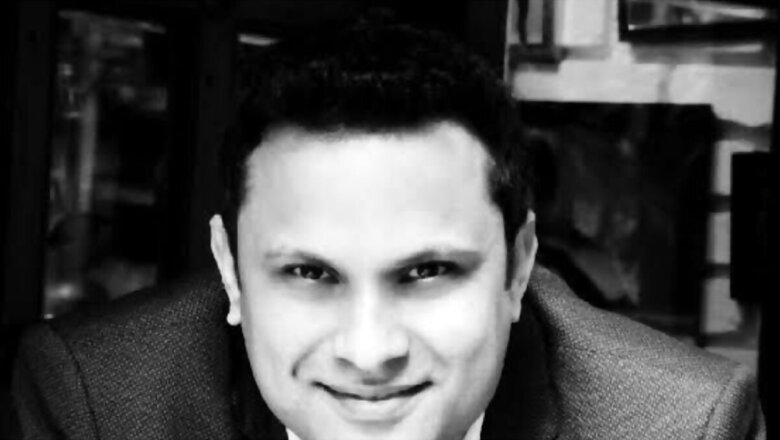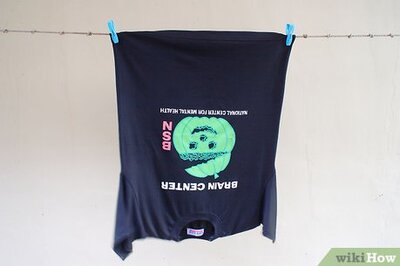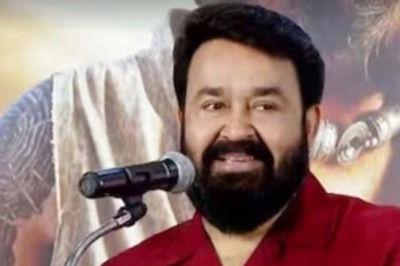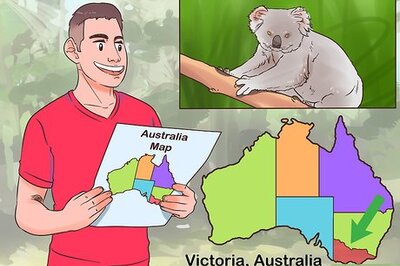
views
The RF Jr. NBA program culminated last month with Sir Chhotu Ram Modern Senior Secondary School in Delhi and Don Bosco High School Matunga in Mumbai winning the U-14 and U-12 boys’ categories. Khalsa School in Ludhiana won the U-14 and U-12 girls’ division. Over 7000 students from 600 schools participated in the 3-on-3 regional basketball events in 14 Indian cities.
Part of the NBA’s efforts to grow basketball in India, the RF Jr. NBA program gives players a systematic path to improve. NBA Basketball School opened in Mumbai in 2017, and Basketball Without Borders Asia has twice been held in India, boosting the sport’s growth.
ICC World Cup: Schedule | Results | Points Table | Most Runs | Most Wickets
News18 Sports spoke to Bharath Ganesh Anantharaman – Senior Director, Basketball Operations, NBA India on his role and goals for developing a basketball culture in India, scouting young talent nationwide and the impact the RF Jr. NBA program has had.
This year’s program spanned 14 cities in India. How has the program expanded its reach, and what major cities and basketball hubs are included?
For the first time, the RF Jr. NBA program featured 3-on-3 tournaments for U-12 and U-14 youth. This was conducted in 14 cities across India – Chennai, Kottayam, Mumbai, Kochi, Bangalore, Hyderabad, Kolkata, Pune, Chandigarh, Ludhiana, Lucknow, Delhi, Aizawl and Jamshedpur – up from 10 cities that were a part of last year’s edition. This year, we also resumed our in-person coaches clinic for local coaches and physical education teachers that taught techniques and best practices for team and player development at any level, including strength and conditioning, mental well-being and nutrition.
Could you elaborate on the core components of the program, including coaching academies and clinics for teachers and basketball coaches?
The Reliance Foundation (RF) Jr. NBA program is a comprehensive youth basketball development initiative that teaches the values and fundamentals of basketball to positively impact the lives of Indian youth. This year’s program featured the RF Jr. NBA National Championship Tournament the 3-on-3 tournaments for U-12 and U-14 youth in 14 cities across India. This year’s program saw participation from close to 7000 kids and more than 600 schools. Sir Chhotu Ram Modern Senior Secondary School, Delhi, and Don Bosco High School Matunga, Mumbai, clinched the boys’ titles in the U-14 and U-12 categories respectively. In the girls, Khalsa School, Ludhiana, won big as they bagged both the U-14 and U-12 titles.
RF Jr. NBA Coaches Clinics – Hosted in-person and virtual clinics for local coaches and physical education teachers that taught techniques and best practices for team and player development at any level, including strength and conditioning, mental well-being and nutrition. This year’s edition saw participation from close to 4000 coaches.
The program focuses on under-12 and under-14, three-on-three tournaments. How do these tournaments contribute to skill development and teamwork among young participants?
Okay, so I would basically like to divide this question into two halves. One is the under 12 and under 14 age group specifically, and the second is the three-on-three format.
So the under 12, under 14, that 12 to 14 age group is actually a very crucial age group, one from a talent development perspective and understanding of the game. Second, from an elite talent identification perspective, it’s a very crucial age. That’s the age when you can actually look at players who can turn out to have high potential in the coming years. If given the right training, they could actually be some of the best players that could have been generated in their age group.
Hence we specifically focus on this age group so that they understand the game deeper, number one, and also we’re able to look at a good pool of talent and identify some elite talent from this pool who can be put through our pathway and probably progress in the elite talent development pathway that we have.
Now coming to the three-on-three format, this is pretty much like a pilot that we did. Our idea was very simple on this, which was we basically wanted the players to experience two components of basketball, which the traditional 5-on-5 format may or may not be able to provide.
One is empowerment. Now at a 12 or 14-year-old, usually the player plays what his or her coach asks them to play. But in the three-on-three format, coaching is not allowed. Hence the coaches are not allowed to coach players during the match. They can only coach them before or after the match. And hence the players will have to take time out, they’ll have to call in substitutions. They pretty much have to think about the game strategy while they’re playing it.
Now this empowerment is very important because at this age, if they learn these concepts, it helps them get a very deep understanding of the game and also helps them understand why their coaches take certain calls at certain junctions as they do. And this will really help them develop their game from then on. Hence we thought it would be a good time to introduce three-on-three to the kids of this age.
The second important part is explosiveness. So in a five-on-five game, it’s usually endurance that comes to the forefront, whereas explosiveness is usually not seen. Hence it’s always difficult to promote the concept of explosiveness because if you look at other countries, you’ll see that explosiveness coming out in even the 5-on-5 games.
So we wanted the players to experience these short-bursts and how such short-burst explosiveness can actually win games for them is something that we believe the players would have learnt. In fact, in many of the games that we saw this year, we were able to see those short bursts in many players. Personally, we are very happy to have been able to observe that. And we’re also happy because a lot of players came back to us and told us how they love the three-on-three format compared to the five-on-three format earlier.
So overall, I think this has taken up. This is a positive step towards developing players and developing their understanding of the game of basketball.
Could you share some insights into the impact of city-level and national championships in igniting passion among young players for the sport of basketball?
In this year’s RF Jr. NBA program, we tried a few things. The 3-on-3 format actually brought in a lot of new players into playing the matches. So whether it was a shorter format or lesser game time, we were able to see the interest in a lot of first-timers or players who were trying a tournament for the first time to come and participate, which we’ve usually not seen during earlier five-on-five regular formats, where we’ve only seen the serious players come and participate.
In the second pilot that we did, we ensured that the winning school teams in the three-on-three tournament at the city level would directly go and participate in representing their respective city in the national level championship, which is also a first of its kind. Usually, we used to select an All-Star team for each city who would then represent their city at the national tournament.
But this pilot actually got a lot of interest from schools, especially from players, because they were playing with their friends and players whom they play with every day. This is very exciting for them.
The schools were also involved because when a particular school team wins the City Championship and qualifies for the national. It’s a very proud moment for the school. Hence we saw a lot of passion from all of these stakeholders, apart from players as well in this year’s program.
And finally, I would say personally, a very nice thing for me to see was when we decided to bring the under 12 teams as well to the national championship, usually we only brought the under 14 teams.
Now this actually turned very competitive. In fact, most under-12 teams when they knew that they could participate in a national-level tournament, played with so much zeal that we’ve never seen before. That was very inspiring to see for us. Now all these three put together, I have to put it down in numbers, we saw close to 7,000 players participate in the Reliance Foundation’s Union Day program this year from over 600 schools across 14 cities.
Now this is one of the highest that we’ve seen in terms of participation for a decade that we’ve been running the program. And we are very happy with the turnout that happened this year, especially coming out of COVID, which has been challenging for all of us. So we are encouraged by what we’ve been able to see this year. And the passion and the zeal that we saw the players participate with. That was inspirational, not just to their fellow players, but to us at NBA and the Reliance Foundation as well.
You mentioned that a few RF Jr. NBA program alumni have secured scholarships abroad. How big is that for others to see that this program has opened doors for young Indian talent on the global stage?
So for any sport to succeed in a market or to gain popularity, developing local heroes is very important. And how we’ve been able to achieve that through our structured pathway, which starts with the RF Jr. NBA program at the grassroots level and goes all the way up to elite programs that we’ve been able to develop.
Now players who start at these grassroots levels and go all the way up to the elite are always looked up to by the younger players and have always received a lot of attention from these players. So for example, recently in the Reliance Foundation program that just concluded, we had invited Amaan Sandhu, who is a graduate of the RF Jr. NBA program as well as the NBA Academy and has pretty much been a part of the entire pathway. We had invited him to come in and distribute the prizes and meet the players. The players were so excited. They knew who Amaan Sandhu was. In fact, a lot of players went up to him and told him how big a motivation he was for their basketball journey. And that was really nice to see.
And that clearly proves that the creation of these local superheroes definitely helps in promoting the sport and inspiring these kids.
Secondly, the other example that we’ve seen in the program this year is Ann Mary Zachariah, who is one of the graduates of, again, the RF Jr. NBA program and she was also a part of the NBA Academy. She committed to an NCAA Division I scholarship with Colorado State University. And we also have Anmolpreet, who is currently part of the professional league in Japan. Now from our side, what we’ve been able to do is propagate their stories on social media, which has been inspirational to a lot of young players. In fact, many players came up to us during the competition this year asking about Anmolpreet, asking about Ann Mary’s journey and how they succeeded from this RF Jr. NBA program all the way to the professional league or an incident division one school.
So, again, tying back to the same Local Heroes concept, when we see, or when the players, when the youth see that a young player who was at their age being part of a grassroots level program like the Reliance Foundation to the NBA program could all the way go up to the NBA Academy and be part of elite programs and move forward and succeed in international platforms is a huge inspiration. And that’s something that we are very proud of having been able to create in India.
What is your vision for the future of basketball in India? And how do you see the RF Jr. NBA program contributing to its growth and development?
Overall, I would say, the goal is to make basketball the number two sport in India. While that will take its own time, it is very crucial for us to have partners like the Reliance Foundation who are on the journey with us to make that goal a reality.
Now to come back to the Reliance Foundation partnership that we’ve been having, they’ve been a partner with us for the last 10 years through the RF Jr. NBA program. And as you know, this program is quite crucial to identify a lot of young talent.
For example, Amaan Sandhu, Ann Mary, Anmolpreet, and many others who’ve gotten scholarships abroad, and have been able to participate in professional leagues abroad, were identified at the RF Jr. NBA program. So that can actually elaborate on how much this partnership means not just to us, but the whole basketball ecosystem in India. What we believe in is that if we have to achieve the goal of making basketball the number two sport in India, we need the support of long-standing partners like Reliance Foundation who work with us, who share the vision and are able to positively impact the lives of numerous players and help them achieve success in their journey. So I think it is very crucial. And we are glad to have a partner such as Reliance Foundation backing us for the NBA program.
How can aspiring players, coaches, and families get more involved with and stay updated on the RF Jr. NBA program?
Players, coaches and families can learn more about this year’s RF Jr. NBA program by following the NBA’s social media channels in India (Instagram, Facebook, X). Fans can also download the NBA App for the latest news, updates, scores, stats, schedules, videos and more.


















Comments
0 comment